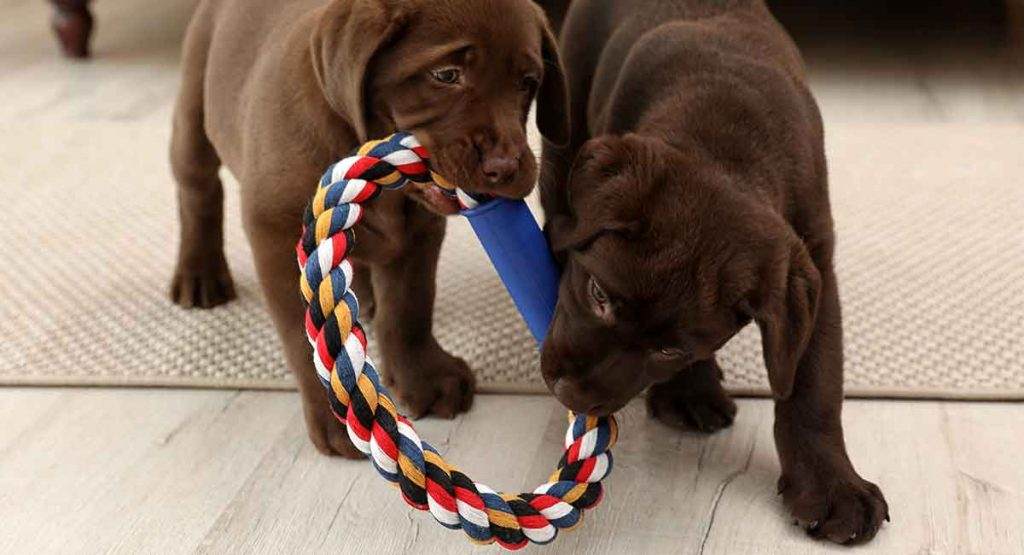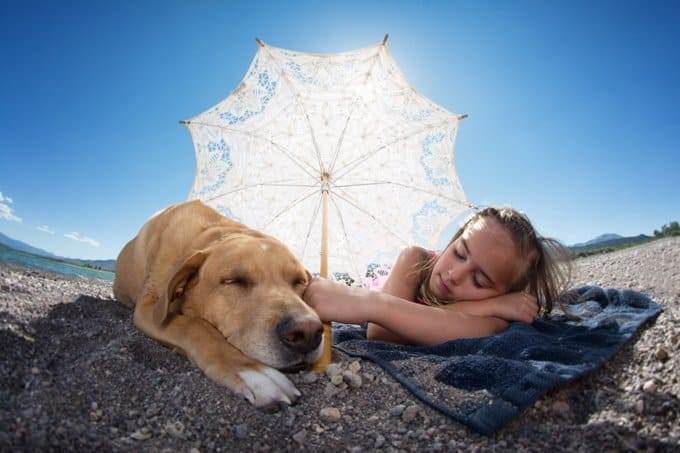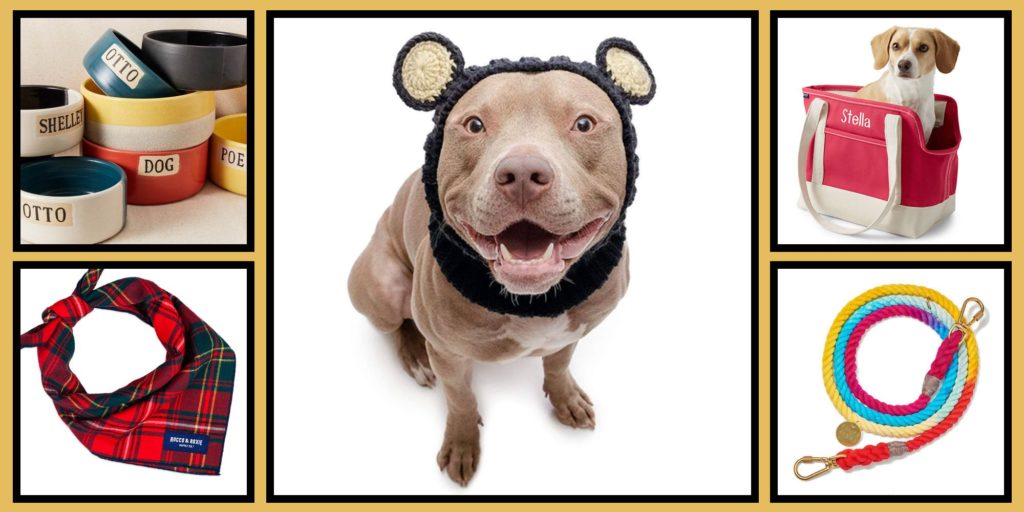The process of making your dog wear muzzle starts with letting him sniff the muzzle and get familiar with it. The next step is to keep the buckle open and give him treat through the open muzzle.
Once he’s fully comfortable with the muzzle, you can make him wear it anytime you want. Most dog owners, use a muzzle when going outside to stop a dog’s barking behavior and also to avoid dog eating anything bad from the streets.
Let’s face it: most people think a puppy needs a restriction around its mouth because it’s aggressive or dangerous.
The sight of a muzzle may cause people to keep distance or move to a safer area. All dogs, including puppies, small dogs, and the friendliest of dogs will benefit from wearing a muzzle.
Dogs Bite out Fear or Pain
Despite evoking fear, muzzles will come in handy in different situations, especially when in a veterinary office. If the canine is in deep pain, his or her instincts may direct it to bite. It’s doesn’t matter how friendly he or she is or the fact that it doesn’t have a single mean bone in his or her body.
So, when you or any other person touch a canine that is in pain or fear, biting is a reflexive action. So, don’t let your dog acquire a “bite reputation” when you can easily avoid it.
When Do You Need to Use Muzzles?
a) During Veterinary Visits
Is your puppy in pain or nervous when at the vet’s office? Chances are, the staff will restrict it if they see the need to do so.
The vet staff may do this by tying the muzzle shut with a gauging strip or slipping it over the dog’s nose. Well, such an experience can be scary for a dog that’s wearing it for the first time.
You can also use a muzzle during grooming sessions, especially if the dog is not familiar with the groomer. Using a muzzle during such meetings can be a precautionary measure to prevent biting or unnecessary movements which can pose a danger to you or the groomer.
b) In Public Places
A muzzle will come in handy when you visit an area that has relevant laws to guide the exercise. According to these laws, you’ll have to restrict your canine when walking in a public space. For example, a country like Italy demands you to restrain your pet even on a cruise trip.
In some states, your dog is required to have a muzzle (especially for ‘dangerous breeds’). The breed-specific legislation (BSL) requires the dangerous breeds should have a muzzle when you are not on private property.
c) New Introductions
You can restrict your canine for a variety of reasons. Like in a situation where you expect, it to become defensive or fearful.
It will also be a temporary solution to a dog that ingests items that may compromise their health and safety.
d) Emergencies
When your dog is injured, and it can bite because of fear or pain, it is advisable for you to use a muzzle. You will be protecting yourself as well as other people nearby, especially if you are in a public place.
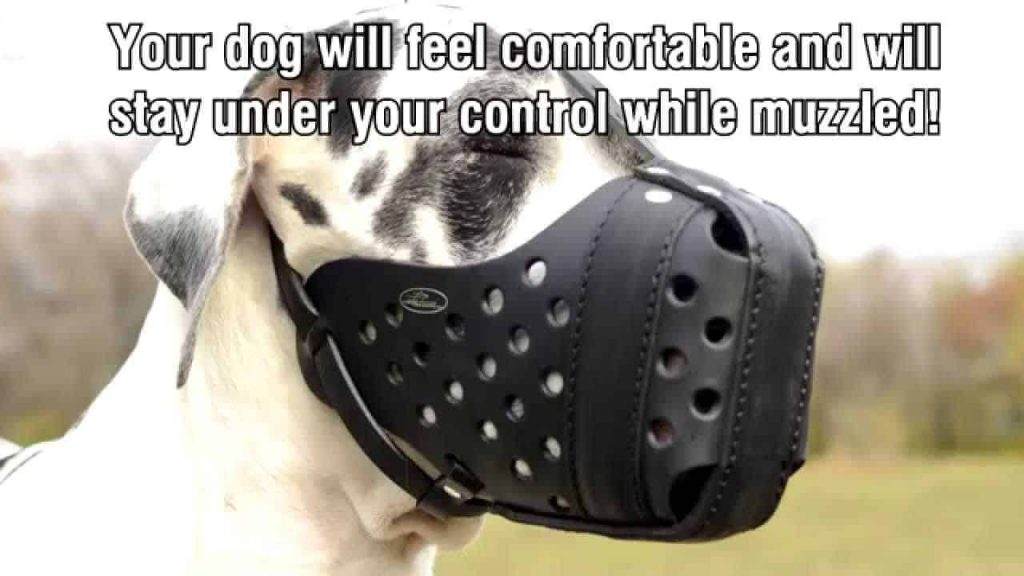
Why Should You Do Early Muzzle Training?
Always train your pups to wear a restriction earlier on in their life. As such, when muzzling happens later in life, they won’t see the experience as intimidating.
But what happens if it is old? Well, you can condition it to adorn a muzzle. Without proper training, your puppy will dislike it as its being restrained or forced to have it.
Once on, your pet will try to rub it against the floor, people, and furniture to remove it. Such a puppy is likely to feel emotionally distressed. Don’t let this happen.
How to Train Your Pooch to Adorn a Muzzle
a) Make the habit a Positive
Why are you teaching your pup to adorn a muzzle? I believe the objective is to make your pet love the muzzle to an extent he or she wants it voluntarily.
It’s easy to create a positive association between the pup and the muzzle. You can accomplish this by using a method that’s known as shaping. For this to work, you’ll need a dog, a muzzle, a tasty treat, or a clicker which may be optional.
b) Use Shaping to Train your canine to Love a Muzzle
Shaping is a teaching method where you reward your pup for successive approximations to the final behavior. It is a step-wise approach.
With shaping, you’ll reward your pet once it progresses to the next step.
c) Use a Clicker
Use a clicker to mark your expected outcomes with shaping. But what’s a clicker?
It’s a noise-making tool that informs your puppy that he or she will be earning a treat due to their performance. While it offers a cutting-edge precision, it’s optional to use.
When using a clicker, you’re free to use a verbal marker like “yes” to precede the treat.
Since clicker training is a whole new process in itself, so I wrote an article on how to use clicker for your dog’s training sessions.
d) Use Treats to Reward Your Dog
If you want your pet to accept and love the muzzle, you must develop a positive association between the two. For instance, clicking happens when a pup looks, walks toward, and sniffs the muzzle.
Be sure to award a treat when the restriction is available. You’ll do this in the hope of generating a conditioned emotive response.
With time, you can ask your dog to put his or her nose through the coil. Do this with temporary support of food lure. With time, add a verbal cue as you fade the food lure. You don’t want the canine to rely entirely on the presence of the treat. That would defeat the entire training purpose.
Safety Tips When Using a Muzzle
- It restricts your dog’s ability to drink water or to pant. Therefore, don’t leave it without supervision.
- Be careful during the warm weather as it may result in a heat stroke.
- Different types of muzzles are available in the market. Choose the best one that’s ideal for your dog.
Simple Steps for Teaching Your Canine How to Wear a Muzzle
- Introduce it and let your pet sniff. Give a treat and repeat this for some few times.
- Touch the nose of your puppy with this device and give a treat. Repeat the process until he or she becomes comfortable.
- Hold the treat on the one hand and the device on the other. Ensure it has to pass the nose through the device to get the gift. Repeat the process for some time.
- Slip the restriction gently onto your dog’s nose and give it a treat. Remove the restriction and repeat the steps for some time.
- Put on the muzzle on your puppy and fasten the buckle. Give a treat and remove it immediately.
- Repeat process five, and count to five, give a treat and remove the muzzle.
- After removing the muzzle, increase the time the muzzle is on and give treats.
Types of Muzzles for Dogs
There are different types of muzzles that you can choose for your dog. Normally, the choice of a muzzle can be determined by your budget, the type of dog you have, and your preference, among other factors.
However, regardless of the muzzle you choose, you will benefit greatly when you train your canine to wear a muzzle. These are the common types of dog muzzles:
i. Basket Dog Muzzle
This muzzle seems like the least humane choice making it popular to most dog owners. Depending on the style of the muzzle you have chosen, your dog will be able to drink or pant more unlike other types of muzzles, thus making it an ideal choice.
There are several types of basket muzzles, including the wire muzzle and the plastic muzzle. If you are looking to prevent dog bites or you have a large dog, a wire basket muzzle is the best option. On the other hand, for small dogs, a plastic basket muzzle is all you need.
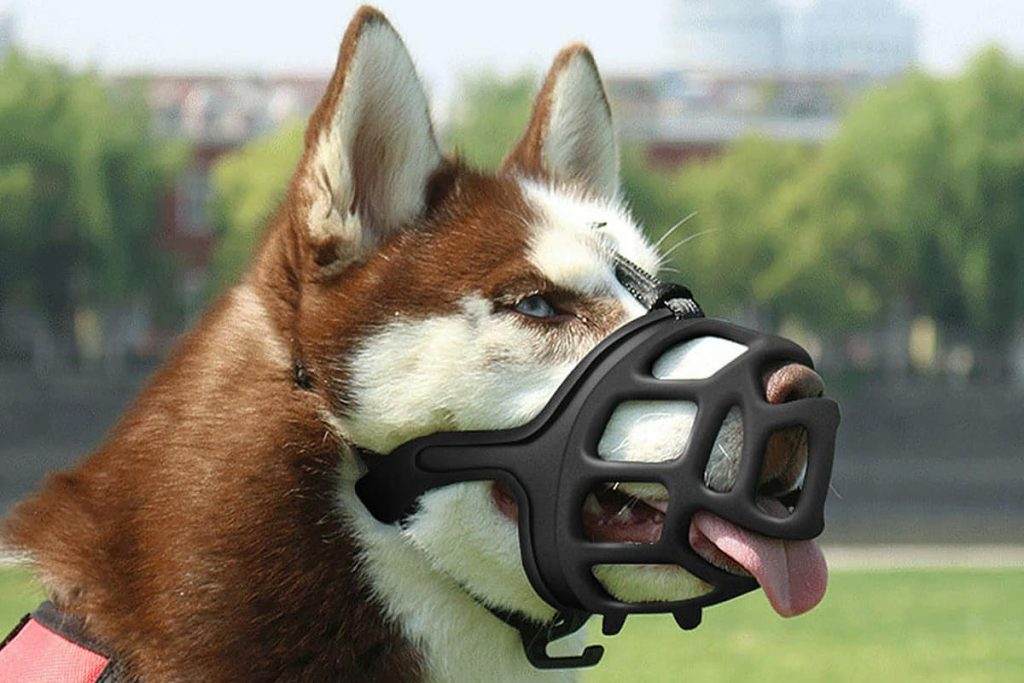
ii. Soft Dog Muzzle
These muzzles are made from fabric, e.g., nylon, leather, or mesh. Since they are made from soft materials, they are not only less comfortable but also potentially more dangerous to the dog.
For instance, soft muzzles can prevent a dog from panting, making it hard for the dog to disperse heat! This can be potentially dangerous, especially in warm weather or when taking a long walk with your dog. Hence, soft muzzles are not preferred by many dog owners because they have more cons than pros.
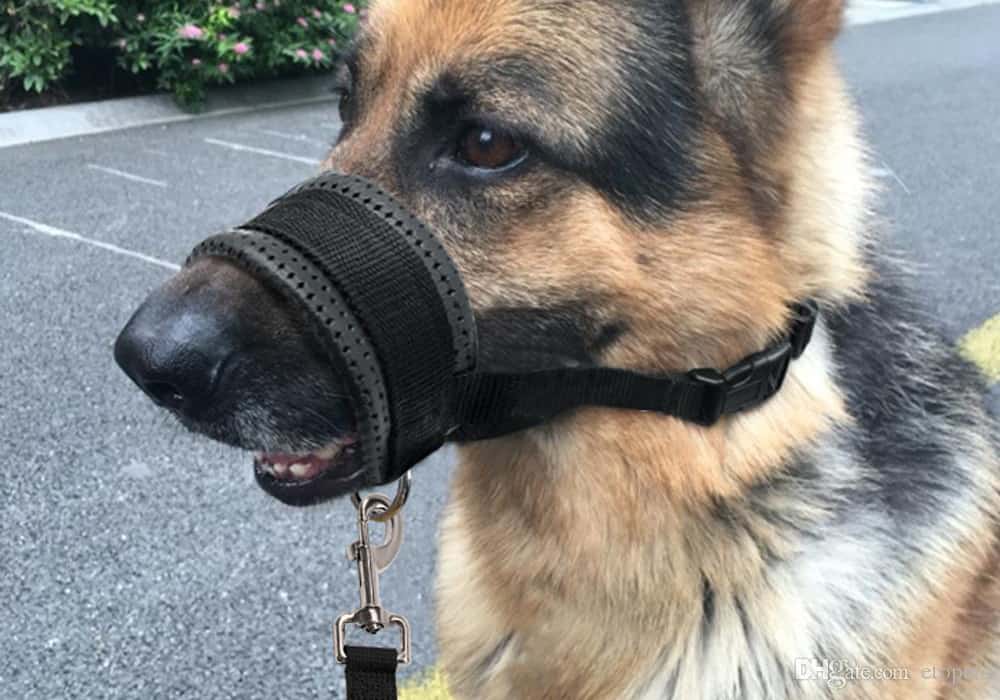
iii. Homemade Dog Muzzle
These muzzles are recommended when there are no other muzzle options available. For instance, if the dog can bite, injured, or in case of an emergency, using a homemade muzzle can be of great help. Since they are used as the last options, they should be used temporarily, especially if you are in public areas.
There are online instructions and videos on how you can make a homemade muzzle using a piece of rope, a pantyhose, or a roll of gauze. If you don’t have any of these materials, a leash can be used as an emergency muzzle.
It is advisable to keep a muzzle in your canine first aid kit to avoid resorting to a homemade muzzle at any given time.

References
Conclusion
If you have an aggressive dog, then ensure it has a restriction around its mouth to prevent it from biting anyone. However, commit to change the underlying problems that make your pup act aggressively.
References
- https://www.vetsmall.theclinics.com/article/S0195-5616(14)00011-4/abstract
- https://baskina.com/wp-content/uploads/2012/10/practioner-guide-working-dog.pdf
- https://www.ncbi.nlm.nih.gov/pmc/articles/PMC1480627/
Table of Contents


